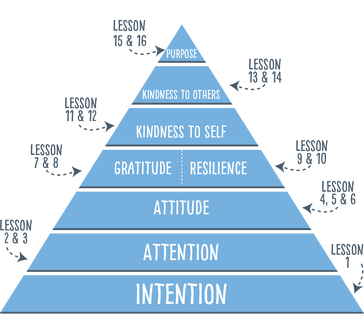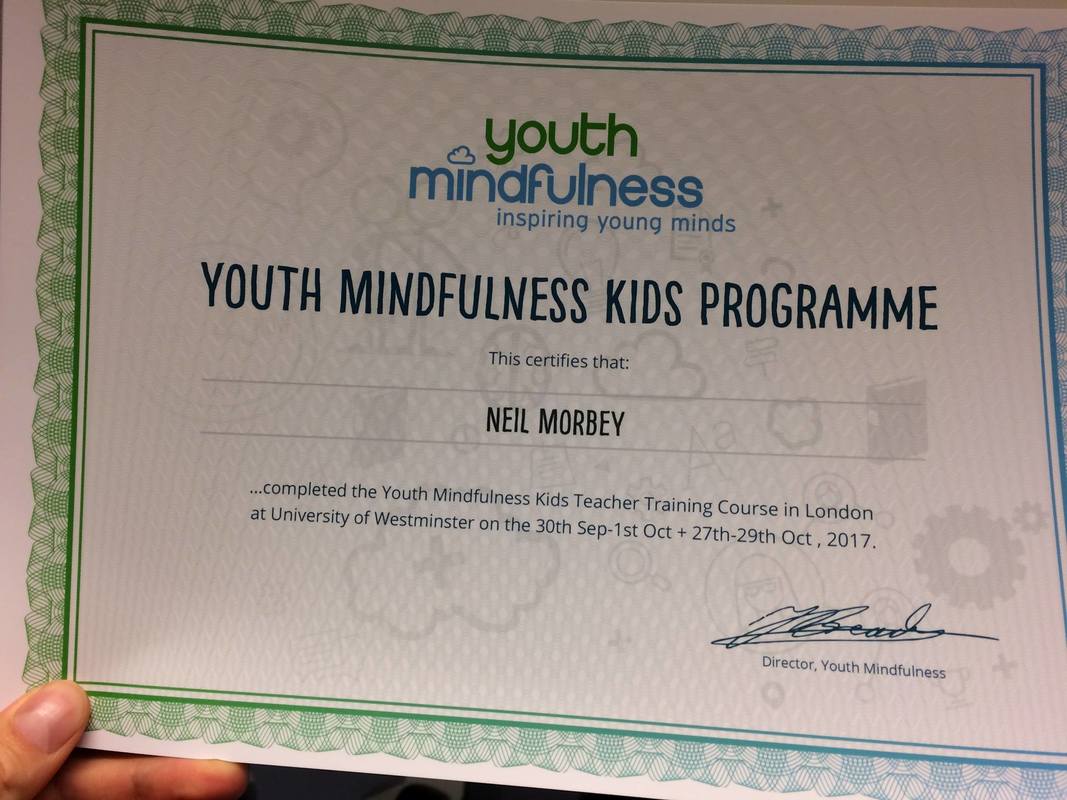"Why is teaching mindfulness in schools so helpful?"
You can type this question into Google and get a surprising variety of answers - not all of them are 'positive'. Some critics think mindfulness may be 'a waste of time' and others that say it may even be harmful! The scientific evidence tends to be positive. Yet Mindfulness is an art, more than a science, so it isn't black and white: on the one hand promising results about anxiety are clear - where existing anxiety exists it is reduced and focus and enjoyment increases. But on the other hand some studies suggest that mindfulness may not perform any better than other forms of education or therapy (Eg. exercise, massage, exercise, muscle relaxation, or cognitive behavioural therapy) and there is some fear of pathologising children and creating fear where it doesn't exist.
So what’s the truth?
Mindfulness is designed as a way of training the mind to be present (and playful). In the 21st Century this is a skill under threat through compulsive negative thinking, driven by mass marketing, cell phones, internet technology and old fashioned teaching and parenting, that isn’t keeping pace with the information age. Instant gratification is only one factor of these. Simon Sineck spoke provocatively about how this creates first impatience and entitlement, and then fragility of ego, emotions and mind. These problems do exist, even if they do not seem apparent in a young person, at the present moment.
You can type this question into Google and get a surprising variety of answers - not all of them are 'positive'. Some critics think mindfulness may be 'a waste of time' and others that say it may even be harmful! The scientific evidence tends to be positive. Yet Mindfulness is an art, more than a science, so it isn't black and white: on the one hand promising results about anxiety are clear - where existing anxiety exists it is reduced and focus and enjoyment increases. But on the other hand some studies suggest that mindfulness may not perform any better than other forms of education or therapy (Eg. exercise, massage, exercise, muscle relaxation, or cognitive behavioural therapy) and there is some fear of pathologising children and creating fear where it doesn't exist.
So what’s the truth?
Mindfulness is designed as a way of training the mind to be present (and playful). In the 21st Century this is a skill under threat through compulsive negative thinking, driven by mass marketing, cell phones, internet technology and old fashioned teaching and parenting, that isn’t keeping pace with the information age. Instant gratification is only one factor of these. Simon Sineck spoke provocatively about how this creates first impatience and entitlement, and then fragility of ego, emotions and mind. These problems do exist, even if they do not seem apparent in a young person, at the present moment.
Well - here’s the thing. Mindfulness, just like anything else, is not for everyone and certainly the timing of the invitation to study and practice mindfulness may not be the right timing for every student in the classroom. Mindfulness is far more than meditation. The work that I do often has to involve parents and teachers in order to be truly effective, and that’s not often possible. And that’s ok, because there are a few key points that journalism fails to recognise::
- Mindfulness is not taught, it is offered and planted, like a seed. It takes time and willingness for that seed to grow in the minds of students. For some it may lie dormant for some time. For others it blossoms quickly.
- The seed is not only about eliminating stress and making us happy. It is a experiential encouragement to explore the mind safely. To help students study the feeling and thinking mind - which some argue is our most important resource - and discover for themselves what they want, what challenges they wish to take on and where their balance lies, in any given moment. It helps us discover and influence our openness and closedness to an experience and how emotion and imagined fear plays a part. The more we practice this ‘self-awareness’ the more we can choose appropriate and healthy choices.
- Mindfulness can be used to train the mind for resilience, agility, focus and sensitivity. It helps students realise that only they can do this. It is the only subject to focus on empowering students to realise that they are not their wayward thoughts or entrenched beliefs, and they can exert influence on their behaviour by practicing perspective and self-empathy.
- Mindfulness cultivates appreciation, joy, wonder and kindness. There is no other subject that does this so directly. There are hundreds of scientific reports relating these practices to increased happiness and harmony. And you’ll know yourself, by feeling into the truth of this - when we practice kindness, gratitude and generosity we become happier and more enthusiastic for life.
 Structure of one of the mindfulness courses
Structure of one of the mindfulness courses I have recently trained in a new course to teach to students aged 8-13 years - written by Youth Mindfulness. The reason I liked this course even more than my training by the Mindfulness in Schools Project (which I trained in two years ago, to teach teenagers). This course has a beautiful arc to the teaching:
- INTENTION refers to the inner decision to be mindful. This relies on motivation, from a core understanding of WHY. Simon Sinek wrote about this in his book, (and resulting movement): ‘Start With Why’.
- ATTENTION and how to train their attention to be present is where the course move to next. This is ensures the students have a grounded mental and experiential understanding that they can choose where to put their attention and those tiny choices have consequences.
- ATTITUDE is key, and is covered in lessons 4 and 5, exploring reasons behind values and establishing more practice, so that the fundamentals are understood in the body, not just the mind. This then leads into cultivation of the following attitudes:
- GRATITUDE
- RESILIENCE
- KINDNESS
- PURPOSE
| At the end of the courses young people and teachers have had the following to say: CHILDREN “When I was nervous at an athletics tournament being mindful helped me.” “My brother was annoying me and I was getting really angry but then I realised that I was angry and I focused on my breath.” “I am more confident when learning new things, and I have learned to be grateful for life.“ | TEACHERS “These students love mindful moments and I love them too!” “The class has become quieter and more interested in the subjects and each other. It seems there are ways to teach empathy! Bullying is starting to reduce too.” PARENTS “I’m grateful to the teacher of mindfulness for helping us come together in a different way” “I can see how this can have huge effects from tiny changes” |
What’s The Research?
There are dozens of reports into emotional wellbeing and mindfulness, including the government's own paper on wellbeing. The Youth Mindfulness website shows a study conducted at the University of Edinburgh in 2014, exploring children’s experiences of the Youth Mindfulness Kids Programme. The results included:
Help me teach more young people and teachers:
I am now looking for schools to teach to in 2018, so I have a favour to ask: Please could you spread the word and pass this blog onto someone you know in education. If you believe children could use a hand with emotional intelligence and cultivating skills mentioned here then please help me to facilitate that.
Thank you!
Neil Morbey
Mindfulness Practitioner, Positively-Mindful.com
There are dozens of reports into emotional wellbeing and mindfulness, including the government's own paper on wellbeing. The Youth Mindfulness website shows a study conducted at the University of Edinburgh in 2014, exploring children’s experiences of the Youth Mindfulness Kids Programme. The results included:
- 98% of children report benefits from participating in the Youth Mindfulness Kids Programme.
- 92% of children reported an enhanced ability to regulate their emotions and tolerate strong affect.
- 72% of children reported that mindfulness helps them to focus, pay attention, and concentrate.
- 72% of children report an enhanced ability to be less reactive towards others, being less aggressive and engaging less frequently in physical and verbal confrontation.
- 77% of children report improvements in peer and family relationships.
- Over 55% of children report that mindfulness helps them to enjoy life more, demonstrating enhanced gratitude, happiness, optimism and quality of life.
Help me teach more young people and teachers:
I am now looking for schools to teach to in 2018, so I have a favour to ask: Please could you spread the word and pass this blog onto someone you know in education. If you believe children could use a hand with emotional intelligence and cultivating skills mentioned here then please help me to facilitate that.
Thank you!
Neil Morbey
Mindfulness Practitioner, Positively-Mindful.com
Also, if you're interested in Mindfulness Certification Training for Individuals and Coaches
You can check it out here: NLP Centre - Mindfulness.
You can check it out here: NLP Centre - Mindfulness.





























